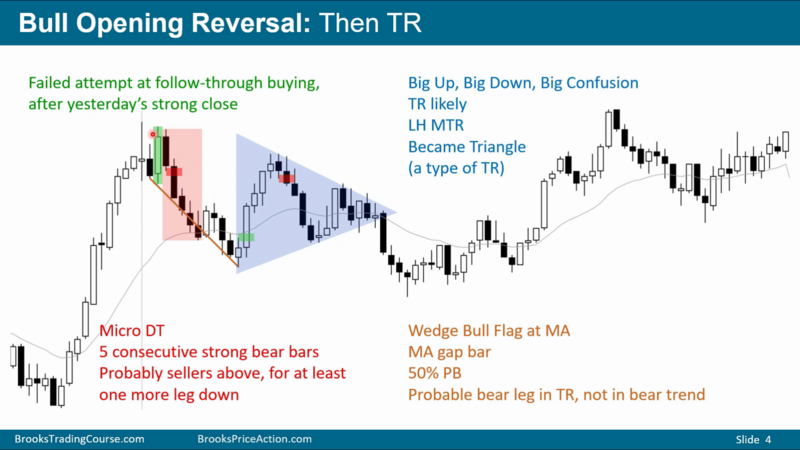Category:BLBCOH-X2-O:修订间差异
无编辑摘要 |
无编辑摘要 |
||
| (未显示同一用户的1个中间版本) | |||
| 第1行: | 第1行: | ||
''Strong [[BLBCOH]] at '''bar 1''' and '''bar 2''' on the '''open'''.'' | ''Strong [[BLBCOH]] at '''bar 1''' and '''bar 2''' on the '''open'''.'' | ||
1R was 57% with a gap greater than 10% of adr 10<ref>by yohtza</ref> | 1R was 57% with a gap greater than 10% of adr 10<ref>5/13/24 10:58:56 AM, by yohtza</ref> | ||
== When GU == | == When GU == | ||
| 第11行: | 第11行: | ||
[[分类:O]] | [[分类:O]] | ||
[[分类:CCBLB]] | [[分类:CCBLB]] | ||
<references /> | |||
[[Category:Backtesting Needed]] | |||
2024年5月14日 (二) 12:43的最新版本
Strong BLBCOH at bar 1 and bar 2 on the open.
1R was 57% with a gap greater than 10% of adr 10[1]
When GU[编辑 | 编辑源代码]
When GD[编辑 | 编辑源代码]
Gap down, then 2 strong consecutive bull bars close near their high. B1 has only 20% chance of being either H or L of day, however if big bull bar after gap down, then 30% chance of L of day; If big bear bar after gap up, then 30% chance of H of day. If there are 2 strong CCBLBCH, the chance of LOD is probably around 40%.
In general, at open of the day, when context is right ⚠️, traders see two big bull bars closing on their highs without much overlap, they can conclude that market is AIL and expect some kind of MM, for example the MM based on the body of the two strong trend bars. Vice versa in bear case (see example below).
- ↑ 5/13/24 10:58:56 AM, by yohtza

